2025’s Best Reusable Cloth Diapers Starter Guide: The Ultimate Clean Routine
Reusable cloth diapers are making a huge comeback in 2025—and for all the right reasons. As families become more eco-conscious and look for ways to save money, cloth diapering offers a fantastic solution. This ultimate starter guide breaks down everything American parents need to know about reusable cloth diapers. Whether you’re brand new to cloth diapering or looking for the latest tips, this guide will walk you through every step, from choosing your stash to mastering the clean routine. You’ll learn practical tips, discover health and environmental benefits, and see how easy it is to make the switch. Ready to keep your baby happy, your wallet fuller, and your footprint lighter? Let’s dive in!
Understanding Reusable Cloth Diapers
What Are Reusable Cloth Diapers?
Reusable cloth diapers are washable, soft, and eco-friendly alternatives to traditional disposables. They come in different styles—pocket, all-in-one, prefold, and fitted. Each is designed for comfort, durability, and easy cleaning. Unlike disposables, which are thrown away after a single use, cloth diapers are washed and reused many times, making them both budget- and planet-friendly.
Brief History & Trends
Cloth diapering has a rich history, going back generations. In the past, cloth was the only option, but with the invention of disposables in the 20th century, many families switched for convenience. Now, with rising eco-awareness, cloth is back! Modern designs are leak-resistant, easier to use, and way cuter. Many American families are rediscovering the benefits and making cloth mainstream again in 2025.
Key Benefits for Families
The main benefits? Cost savings, fewer chemicals, and way less waste in landfills. Babies wearing cloth often experience fewer rashes, and parents can save thousands of dollars over the diapering years. Plus, cloth diapers come in adorable patterns and styles, making diaper changes a bit more fun.
Disposable vs. Reusable: What’s Different?
The biggest differences are environmental impact and cost. Disposables fill up landfills and require constant repurchasing. Cloth diapers, on the other hand, are a one-time investment that can last for years—and can even be reused for future siblings. The routine is a bit different (washing instead of tossing), but the rewards are worth it!
2×5 Info Table: Understanding Cloth Diapers
| Type | Feature | Disposable Diaper | Reusable Cloth Diaper |
|---|---|---|---|
| Cost | Over 2-3 years | $2000+ | $300-$500 |
| Waste | Pounds per baby | 2000+ lbs | <50 lbs (wastewater) |
| Skin Contact | Chemical exposure | Yes | Minimal |
| Ease of Use | Changes & disposal | Very easy | Easy (modern types) |
| Design Variety | Colors & patterns | Limited | Huge selection |
| Benefit | Cloth Diaper Advantage |
|---|---|
| Eco-friendly | Yes |
| Lower cost | Yes |
| Reusable | Yes |
| Healthier skin | Yes |
| Cute designs | Yes |
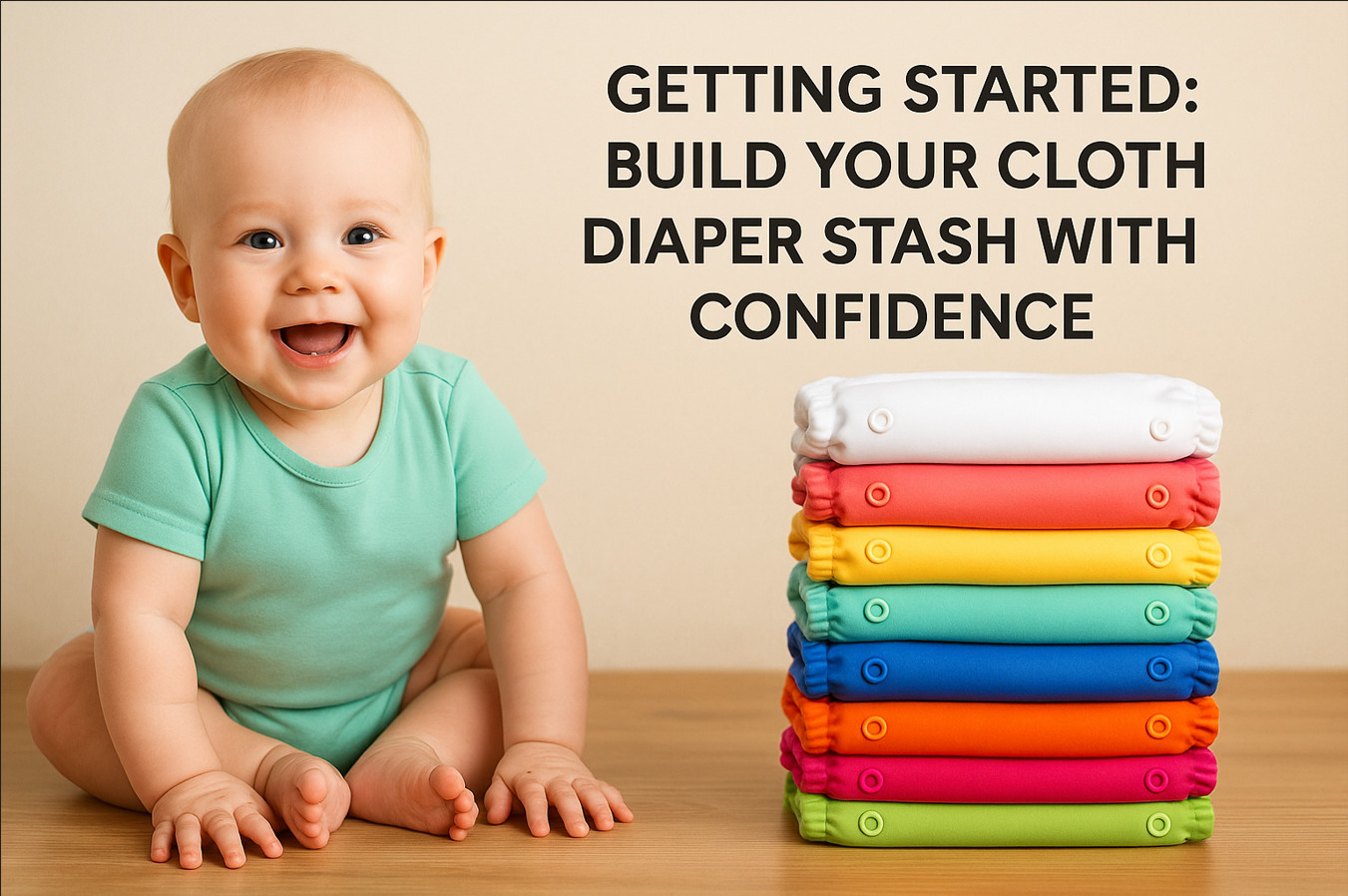
Getting Started: Building Your Cloth Diaper Stash
How Many Diapers Do You Need?
For full-time cloth diapering, most families find that 20–24 diapers is the sweet spot. This number allows for washing every 2–3 days without running out. For part-time or backup use, 10–12 may be enough.
Choosing the Right Style
Cloth diapers come in several types:
-
Pocket diapers: Versatile and easy to stuff with absorbent inserts.
-
All-in-one (AIO): Closest to disposables, with everything sewn together.
-
Prefolds & covers: Budget-friendly and quick-drying, but need folding.
-
Fitted diapers: Excellent absorbency, great for nighttime.
Each style has pros and cons. Many parents mix and match until they find their favorites!
Must-Have Accessories
Beyond diapers, you’ll need:
-
Diaper pail or wet bag: For storing used diapers before washing.
-
Cloth wipes: Soft and reusable, perfect match for cloth diapers.
-
Diaper sprayer: Attaches to the toilet to rinse solids.
-
Liners: Optional but help make clean-up easier.
-
Detergent: Fragrance-free, additive-free detergent works best.
Sizing & Fit Explained
Most modern cloth diapers are one-size-fits-most—adjustable snaps and elastic ensure a snug fit from birth to potty training (about 8–35 lbs). For newborns, some prefer a dedicated smaller size for those first months. Proper fit prevents leaks and ensures baby comfort.
2×5 Info Table: Diaper Styles & Accessories
| Diaper Style | Absorbency | Dry Time | Ease of Use | Cost |
|---|---|---|---|---|
| High | Medium | Easy | $$ | |
| All-in-One | Medium | Slow | Easiest | $$$ |
| Prefold | Medium | Fast | Moderate | $ |
| Fitted | Very high | Medium | Moderate | $$ |
| Hybrid | Variable | Medium | Easy | $$ |
| Accessory | Why You Need It |
|---|---|
| Wet bag | Store dirty diapers |
| Cloth wipes | Gentle cleaning |
| Diaper sprayer | Easy rinsing |
| Liners | Protects diaper |
| Special detergent | Prevents build-up |
The Ultimate Clean Routine for Cloth Diapers
Prepping Diapers for First Use
Before using, wash new diapers 2–3 times to boost absorbency and remove any factory residues. For natural fibers (cotton, hemp, bamboo), extra washes help them reach full absorbency.
Daily Cleaning Steps
-
Remove solids: Shake off any solids into the toilet or use a liner.
-
Store dirty diapers: Place in a wet bag or diaper pail.
-
Wash cycle: Use a pre-wash (short, cold), then a main wash (hot, with detergent).
-
Dry: Line dry in the sun (natural stain remover!) or tumble dry on low.
Deep Cleaning & Stripping
If diapers smell or seem less absorbent, “strip” them with a special wash using hot water and a little detergent (no fabric softeners). This removes build-up and keeps diapers fresh.
Best Detergents & Additives
Choose a simple, clean detergent with no additives, softeners, or brighteners. Avoid bleach except for rare deep cleans. Additives like vinegar or baking soda can sometimes harm diaper fibers, so use sparingly.
2×5 Info Table: Cleaning Routine & Tips
| Step | Tip | Why It Matters | Frequency | Product Suggestion |
|---|---|---|---|---|
| Remove solids | Use liners for easier clean-up | Less mess | Every change | Biodegradable liners |
| Pre-wash | Short cold cycle | Loosens soils | Every wash day | Simple detergent |
| Main wash | Hot wash, more detergent | Kills germs | Every wash day | Cloth-safe detergent |
| Rinse & dry | Extra rinse, sun dry if possible | Fresher, whiter diapers | Every wash day | Sunlight or dryer |
| Deep clean | Strip occasionally | Removes build-up | Monthly or as needed | RLR Laundry Treatment |
| Cleaning Product | Cloth Diaper Safe? |
|---|---|
| Mainstream detergent | Sometimes |
| Bleach | Rarely |
| Baking soda | Use sparingly |
| Vinegar | Use sparingly |
| Fabric softener | Never |
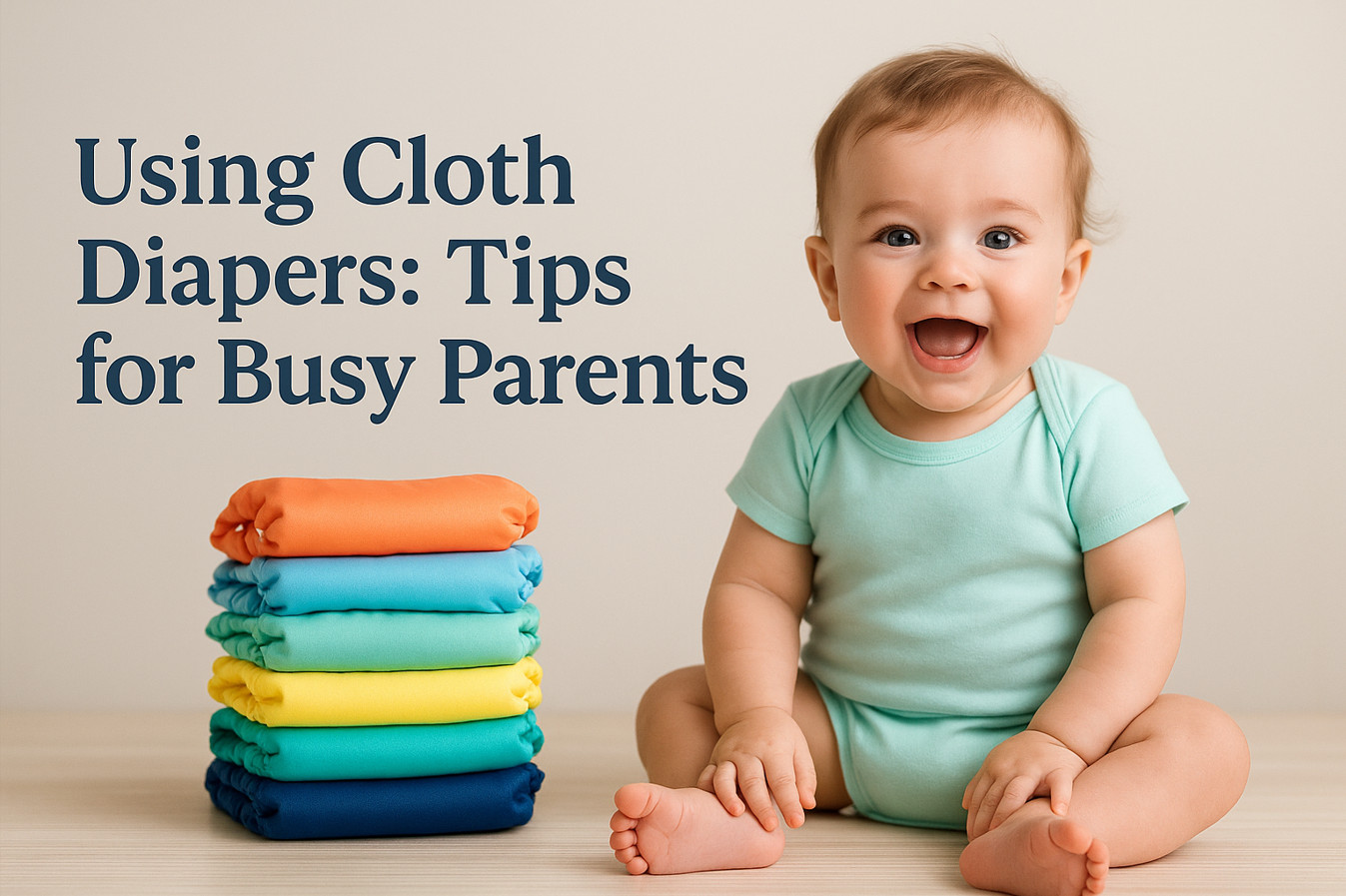
Using Cloth Diapers: Tips for Busy Parents
Diaper Changes Made Simple
Cloth diaper changes are nearly as quick as disposables. Lay baby down, unsnap or unfasten, wipe clean, and put on a fresh diaper. If out and about, use a wet bag to store the dirty one until you get home.
On-the-Go Diapering
Pack a few extra diapers, a wet bag, and cloth wipes when heading out. Modern covers and snaps make changes easy, even in public bathrooms. Wet bags keep everything tidy and odor-free.
Overnight Solutions
Some babies need extra absorbency at night. Try using a fitted diaper with a wool cover, or stuff a pocket diaper with extra inserts. Test a few combos to find what works for your heavy wetter!
Preventing Leaks
Leaks usually mean the fit isn’t right or the absorbency isn’t enough. Double-check leg elastics and waist snaps, and consider adding a booster insert for longer periods.
2×5 Info Table: Quick Tips for Busy Parents
| Challenge | Solution | Time Saver | Best for | On-the-Go Must? |
|---|---|---|---|---|
| Leak prevention | Adjust fit, add booster | Yes | All babies | Yes |
| Outings | Use wet bags | Yes | Busy families | Absolutely |
| Nighttime use | Try fitted or add inserts | Yes | Heavy wetters | No |
| Diaper rash | More frequent changes | Yes | Sensitive skin | Sometimes |
| Storing dirty | Use sealed pail or bag | Yes | Everyone | Yes |
| On-the-Go Item | Purpose |
|---|---|
| Wet bag | Dirty diaper storage |
| Cloth wipes | Easy clean |
| Spare cover | For emergencies |
| Small sprayer | Pre-cleaning |
| Travel size cream | Rash prevention |
Troubleshooting & Care Tips
Common Issues & Quick Fixes
-
Leaks: Try a tighter fit or extra insert.
-
Stains: Sun them out—natural sunlight is an amazing stain remover.
-
Ammonia smell: Deep clean with a proper “strip.”
-
Repelling: Wash with hot water and a bit of detergent to remove build-up.
Stain Removal Hacks
Lay clean, wet diapers in the sun for an hour or two. For stubborn stains, a gentle scrub with a baby-safe soap works wonders. Avoid harsh chemicals!
How to Store Dirty Diapers
Store in a dry pail or wet bag until wash day. Make sure there’s airflow to prevent mildew and odors. Wash every 2–3 days for best results.
Extending Diaper Lifespan
-
Avoid bleach and fabric softeners.
-
Use the right detergent.
-
Line dry when possible.
-
Rotate your stash to prevent overuse.
2×5 Info Table: Troubleshooting
| Problem | Cause | Quick Fix | Prevention | When to Seek Help |
|---|---|---|---|---|
| Leaks | Poor fit/absorb. | Adjust fit/insert | Size check | Persistent leaks |
| Smells | Detergent build-up | Strip diapers | Rinse well | Unresolved smells |
| Rashes | Detergent/fit | Change routine | Hypoallergenic wash | Doctor’s advice |
| Stains | Foods/solids | Sun bleaching | Fast rinse | Very dark stains |
| Repelling | Creams/build-up | Hot wash | Use diaper-safe cream | Ongoing issues |
| Care Tip | Effect |
|---|---|
| Line dry | Longer lifespan |
| Avoid softeners | Better absorbency |
| Rotate stash | Even wear |
| Regular deep clean | Fresher diapers |
| Gentle detergent | Healthier for baby |
Sustainable & Cost Benefits in 2025
Environmental Impact
Each baby using disposables creates over one ton of landfill waste! Cloth diapers can reduce your family’s diaper trash by over 90%. Washing uses some water and energy, but the overall impact is far lower.
Saving Money Over Time
The upfront investment for cloth is higher, but you’ll save thousands compared to constantly buying disposables. Plus, many families resell their cloth stash or use it for future siblings.
Cloth Diapers & Baby’s Health
Cloth diapers are free from harsh chemicals and fragrances. Many babies experience fewer rashes, and you can easily monitor for sensitivities by changing laundry routines if needed.
Getting Support: Online Groups & Resources
American parents have tons of support online. Check out cloth diapering forums, Facebook groups, and trusted parenting websites for help, swaps, and troubleshooting.
2×5 Info Table: Cost & Environmental Savings
| Yearly Cost | Disposables | Cloth Diapers |
|---|---|---|
| Year 1 | $800–$1200 | $300–$600 |
| Year 2+ | $800–$1200 | $50–$100 |
| 2-Year Total | $1600–$2400 | $350–$700 |
| Resale Value | None | $100+ |
| Sibling Use | No | Yes |
| Eco Benefit | How Cloth Wins |
|---|---|
| Less landfill waste | Yes |
| Lower CO2 footprint | Yes |
| Fewer chemicals | Yes |
| Renewable fabrics | Yes |
| Long lifespan | Yes |
Frequently Asked Questions
How many cloth diapers do I really need?
Most families use 20–24 for full-time, or 10–12 for part-time use. It depends on your washing routine and baby’s age.
Is washing cloth diapers hard?
It’s easier than you think! With the right detergent and routine, most parents find it just takes a few extra minutes per day.
Do cloth diapers cause more rashes?
Usually, babies in cloth get fewer rashes—just change frequently and use gentle detergent.
How do I deal with stains and smells?
Sunlight is the best stain remover. For smells, make sure you rinse and wash properly, and strip diapers when needed.
Can I use cloth diapers overnight?
Absolutely! Boost absorbency with extra inserts or use fitted diapers for leak-free nights.
Are there any real savings with cloth diapers?
Yes—most families save $1,000 or more, especially if they use their stash for future siblings or resell them.
Conclusion
Switching to reusable cloth diapers in 2025 is one of the smartest moves for families who care about their baby, budget, and the planet. With a little preparation and the right routines, cloth diapering is easy, economical, and rewarding. You’ll enjoy a cleaner home, a greener future, and a happier baby—guaranteed!
Share this content:
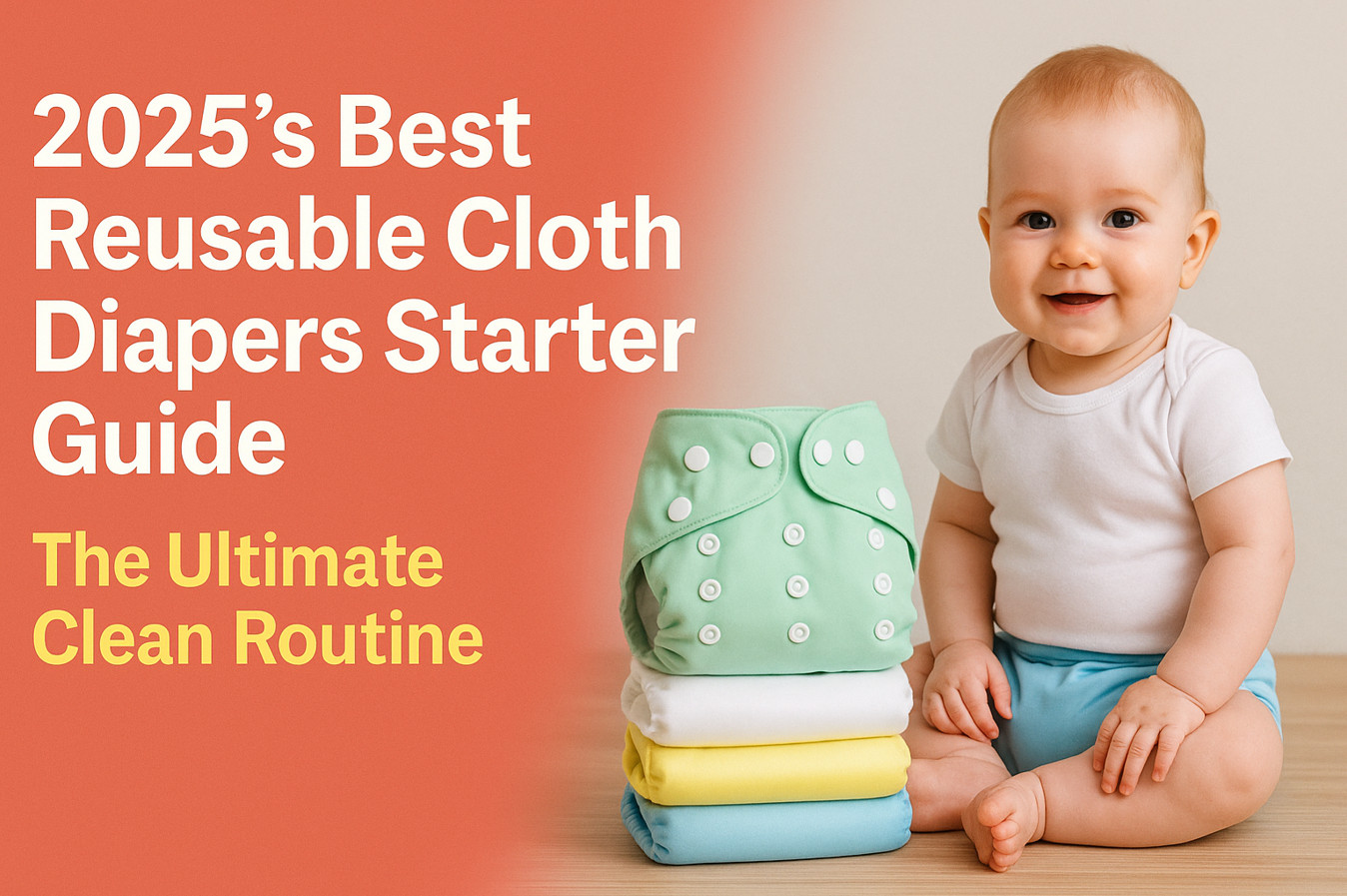
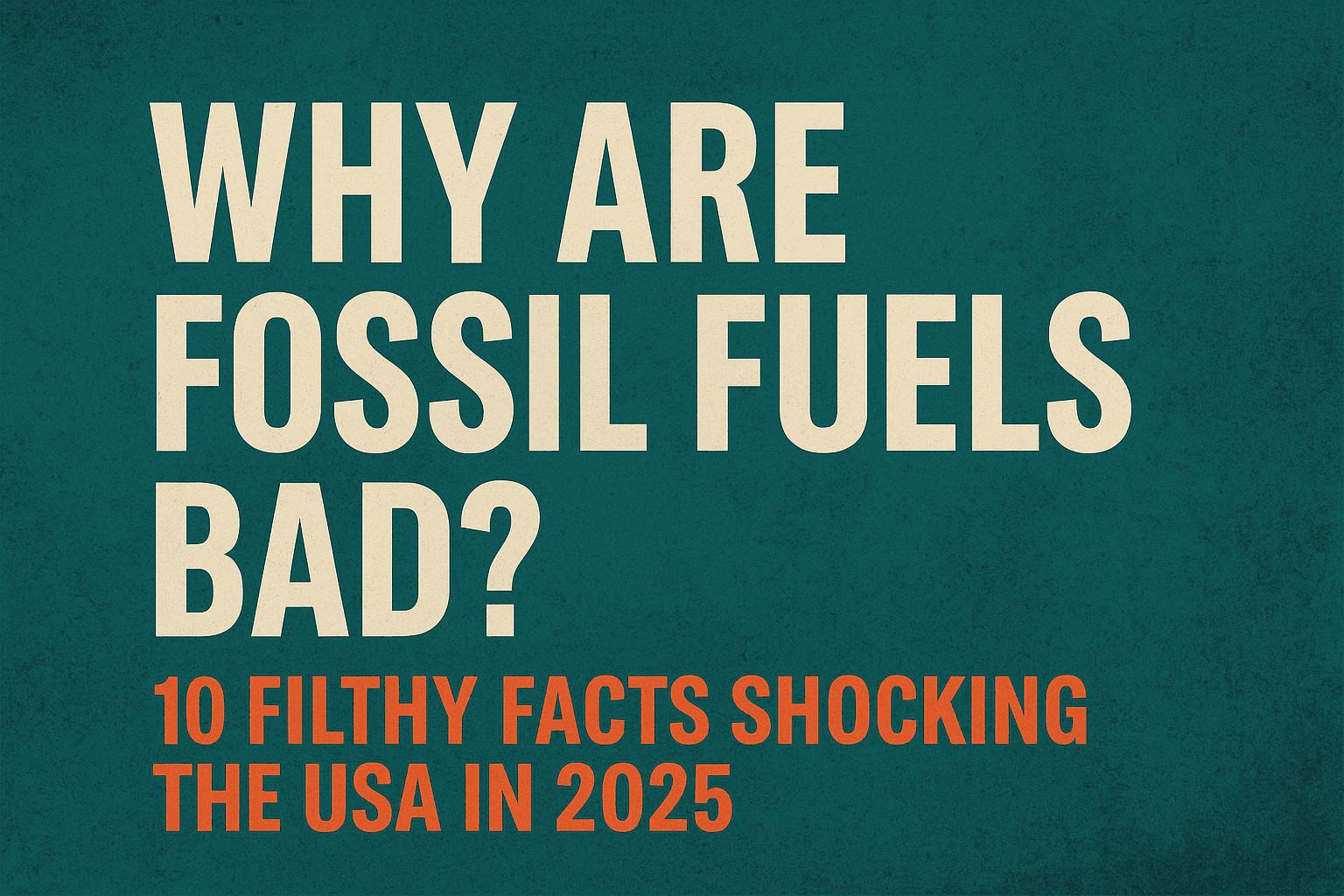
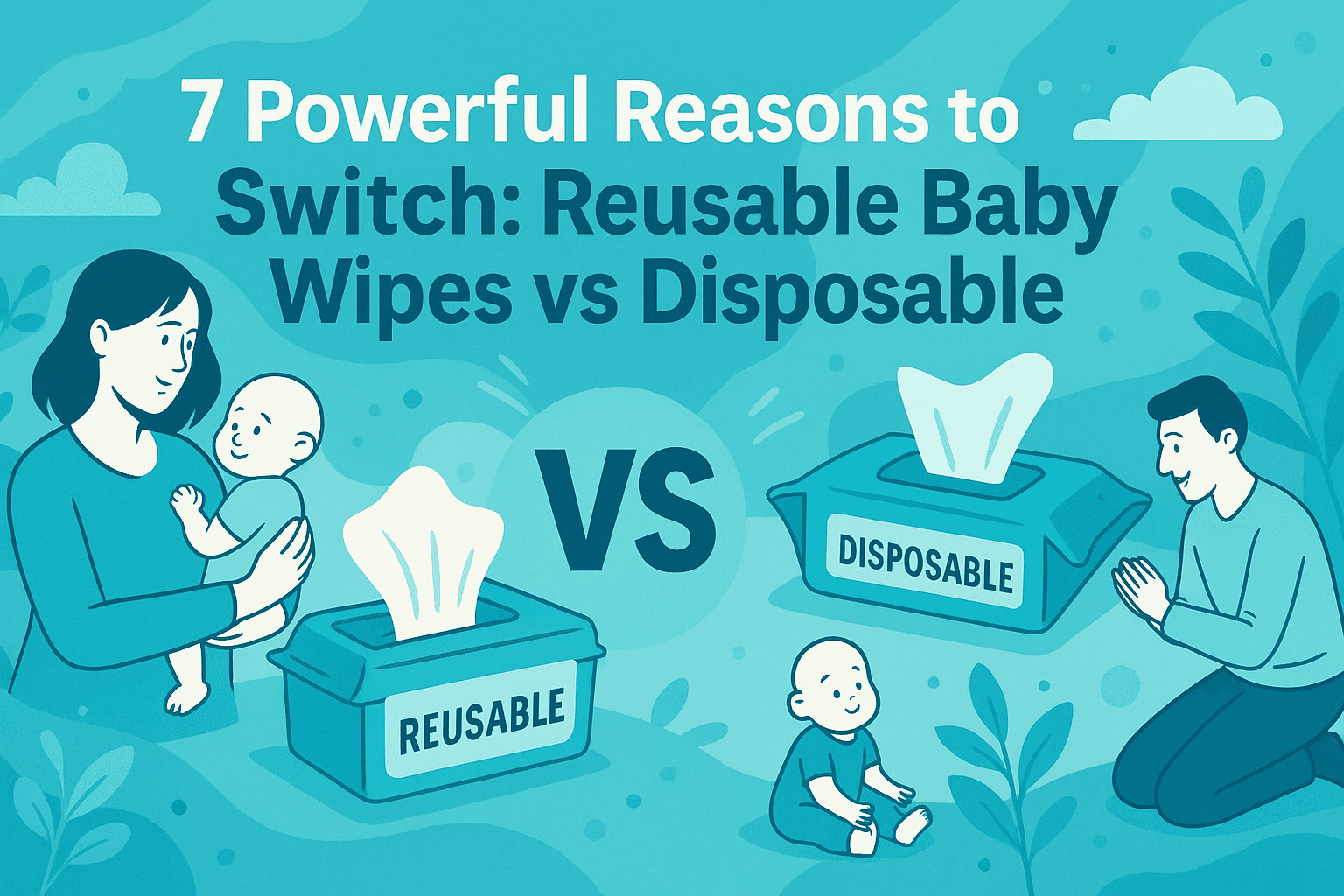
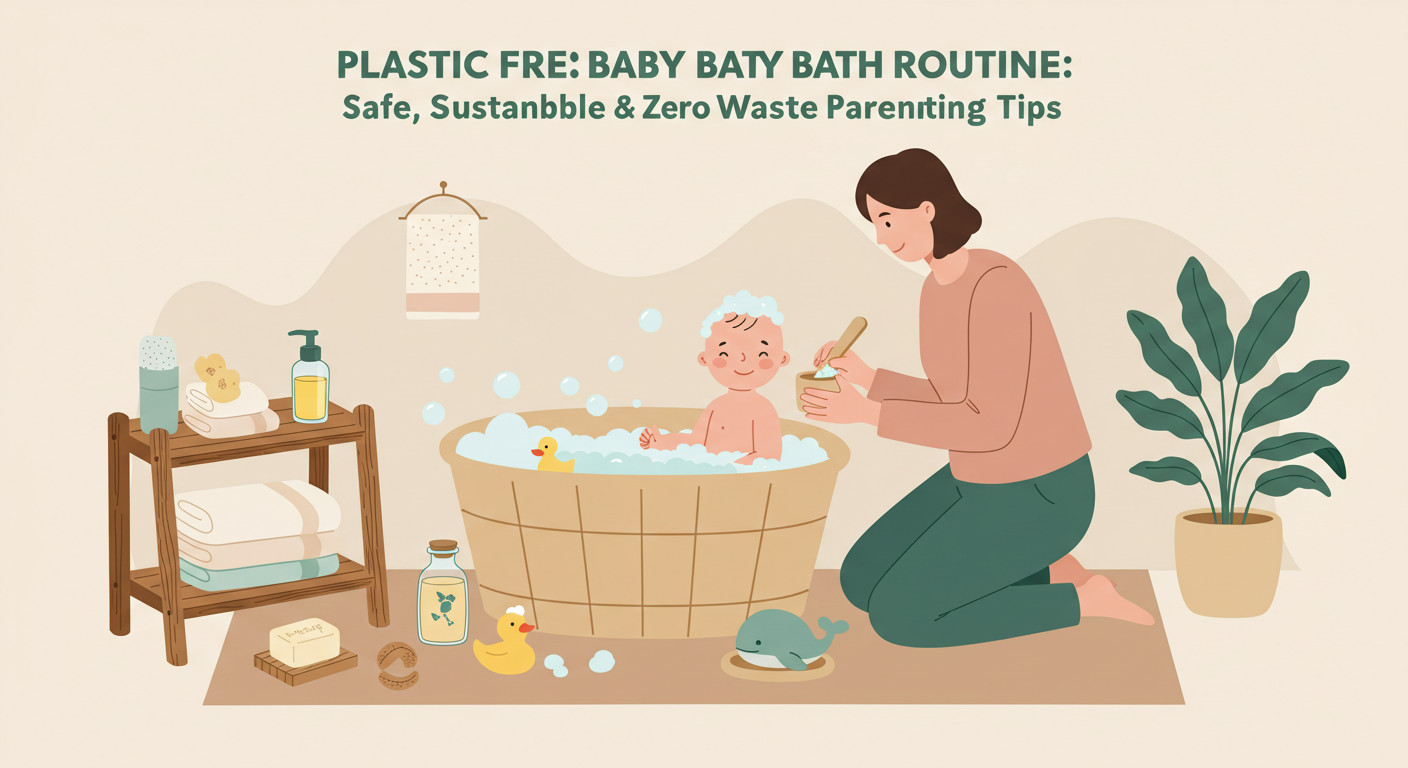
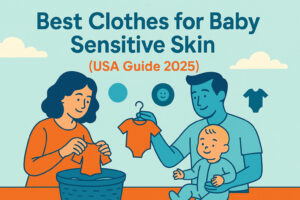
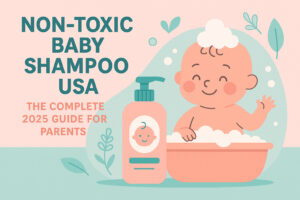
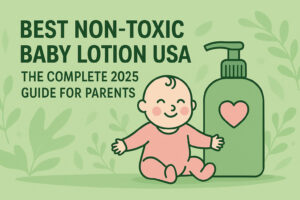
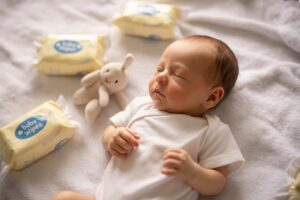
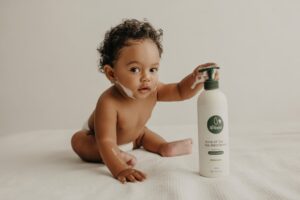
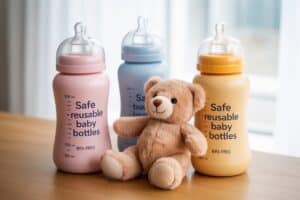
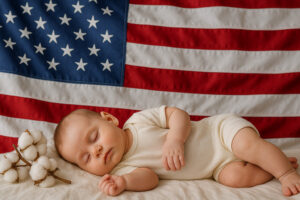
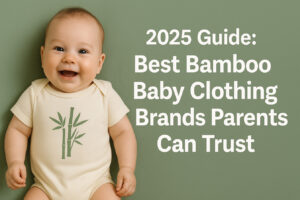
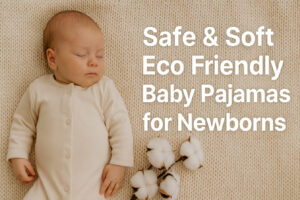
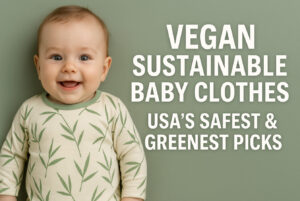
Post Comment